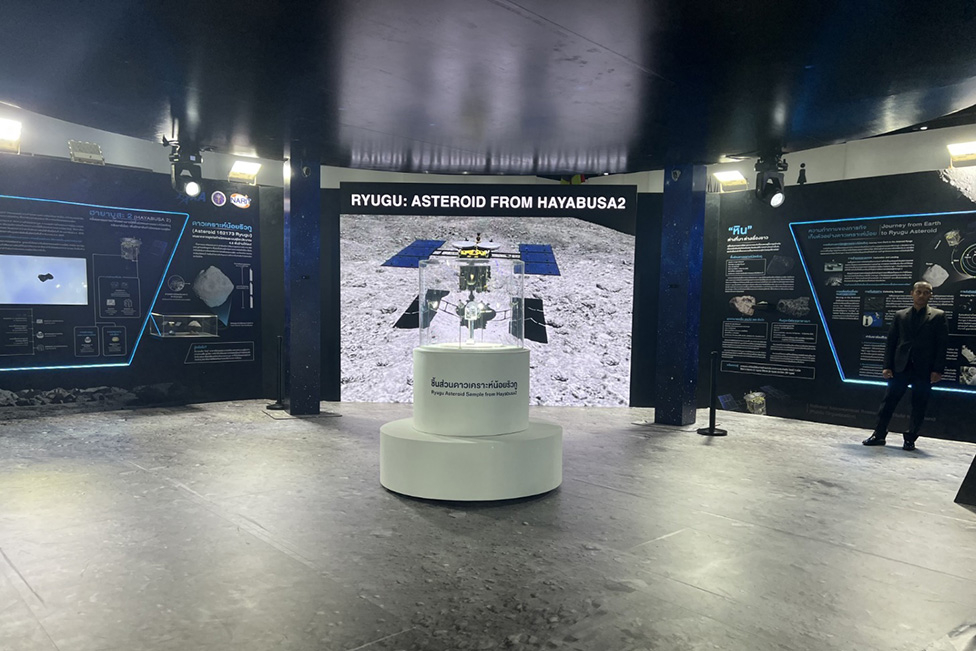Bangkok, Thailand ― 2nd Week of August 2025
A Dawn in Bangkok
The morning sky over Bangkok on August 8 was a brilliant shade of blue, clear yet heavy with the humid air of the tropics. Palm fronds swayed above the busy streets, and the sunlight shimmered across the asphalt. As we made our way to the Queen Sirikit National Convention Center (QSNCC), the venue for the MHESI Fair 2025, the city seemed to hum with anticipation.
It was here that the asteroid Ryugu sample, brought back by the Hayabusa2 Mission, was about to make its debut outside Japan―the first such public display anywhere in Asia. Birds in the park sang above the morning traffic, and amid the vibrant pulse of Bangkok, a new page in Japan-Thailand space cooperation was opening.

Bustling streets of Bangkok and the Queen Sirikit National Convention Center, with nearby parks and city views.

Entrance of the venue, with DG Fujimoto alongside NARIT's International Affairs Officer, Ms. Supaluck Chanthawan.


NARIT's Thai-language publicity for the Ryugu exhibition, accompanied by photos shared
on their official Facebook page. Read more in this NARIT Facebook post.
Courtesy Visit to Ambassador Masato Ohtaka, Ambassador Extraordinary and Plenipotentiary to the Kingdom of Thailand
On the morning of August 8, ISAS Director General Fujimoto Masaki paid a courtesy call on H.E. Ohtaka Masato, Ambassador of Japan to the Kingdom of Thailand, at the Ambassador's residence. They exchanged views on the objectives of the visit, Thailand's space program, and opportunities for advancing Japan-Thailand cooperation in space science and exploration. Ambassador Ohtaka, now serving his second posting in Bangkok, offered thoughtful insights, and the meeting was conducted in a warm and friendly atmosphere.

Ambassador Ohtaka with DG Fujimoto and colleagues.
A Call to the Japanese Community
Later that day, the Embassy's multi-purpose hall filled with families from the Japanese community in Bangkok. DG Fujimoto's lecture, "Shaping the Future through Space Science ― Japan's Bold Challenges", spoke of Hayabusa2, SLIM, and the upcoming Martian Moons eXploration (MMX) mission. About 120 participants, including children on summer vacation, listened intently.
Children eagerly asked questions, and DG Fujimoto, recalling his own childhood abroad, encouraged them: "Your experiences here will surely help you one day." He urged them to write down the steps of the MMX mission in their notebooks ― a call that made their eyes sparkle. Many rushed forward afterward, proudly carrying notebooks signed by him.
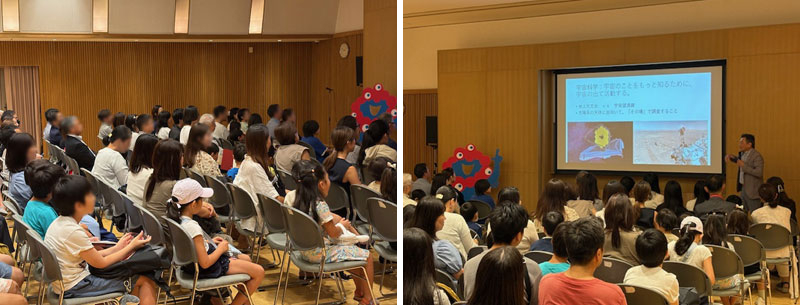
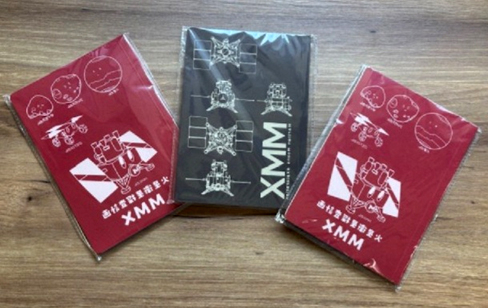

Scene from the Japanese community lecture, with the event poster.

Group photo with participants after the lecture.
Sharing Science with Thailand's Next Generation
In the afternoon, the focus shifted to the National Science and Technology Development Agency (NSTDA), a key partner in the Kibo-ABC Program. About 50 researchers, students, and journalists gathered. Dr. Chularat Tanprasert, Deputy Director, opened the session. The young audience leaned forward, their notebooks open, eager to capture DG Fujimoto's words.
The lecture sparked animated questions ― from the future of lunar missions to how international cooperation might shape the next generation of exploration. Afterward, local media pressed in, and DG Fujimoto spoke to Thailand PBS with calm assurance, his words carrying Japan's vision into Thai homes.
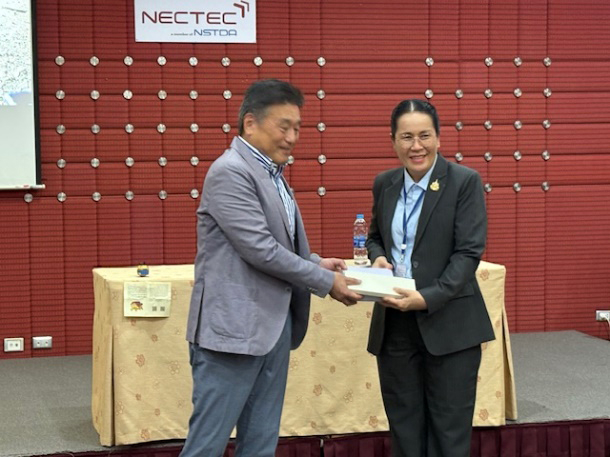
Dr. Chularat Tanprasert delivering opening remarks.

DG Fujimoto giving his lecture at NSTDA.

Poster of the event and NSTDA's display of the Kibo-ABC Program.

DG Fujimoto in conversation with Thai students and young researchers after the lecture.

Interview with a reporter from Thailand PBS.
At the entrance, a portrait of Queen Sirikit, adorned with flowers and national flags, reminded visitors of Thailand's traditions. Her birthday, August 12, is a national holiday ― blue being her symbolic color.
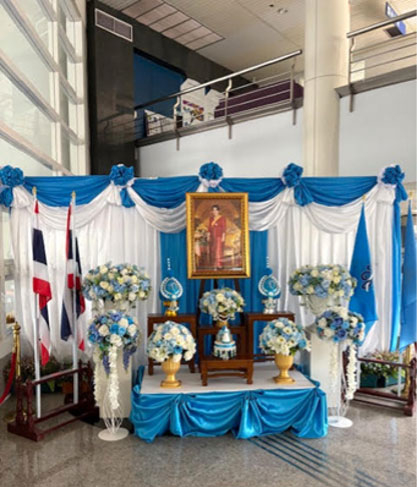
Main entrance decorated with Queen Sirikit's portrait, flowers, and flags.
August 9 ― A Historic Opening
The next morning, sunlight streamed into QSNCC as the MHESI Fair 2025 opened. Ministers, ambassadors, and dignitaries filled the hall. H.E. Sudawan Wangsuphakijkosol, newly appointed Minister of Higher Education, Science, Research and Innovation, declared the event open. DG Fujimoto stood on stage with representatives from many nations, greeted by warm applause.



Greetings exchanged with senior officials, including Deputy Director General Surarak of GISTDA (left)
and Director General Sukit of NSTDA (right)
The Ryugu sample was displayed at the booth of the National Astronomical Research Institute of Thailand (NARIT), who had been working with JAXA over the previous year to bring the asteroid sample to Thailand. The sample was showcased in a beautifully designed dedicated exhibit that drew visitors like a magnet. The display was flanked by Thai-language explanations and models of the Hayabusa2 spacecraft and asteroid Ryugu, while the floor of the exhibit space showed images captured by Hayabusa2 of the asteroid surface, making you feel as if you were walking over the asteroid to see the sample. Parents lifted children onto their shoulders for a better view; students leaned in close, their faces lit by the reflection of light on cosmic dust.


NARIT booth with detailed Thai-language explanations on the walls.

Visitors ― students, families, children ― gazing at the sample with fascination.

NARIT's cheerful mascot greeting guests.
VIPs also arrived. Minister Sudawan paused to listen intently as DG Fujimoto explained the significance of the sample. Cameras clicked. Later, embassy officials and a local science communicator, who instantly shared the story on Facebook, crowded the booth.



Minister Sudawan listening to DG Fujimoto's explanation, surrounded by press.
For more details, please check this Facebook reel.

Embassy officials Deputy Chief of Mission Tatsushi Nishioka receiving DG Fujimoto's explanation.

DG Fujimoto interviewed by a well-known Thai science communicator.
Elsewhere in the hall, exhibits honored King Rama IV and offered resting places where visitors reflected on Thailand's history while surrounded by its future.

Venue's shop and historical corner dedicated to King Rama IV.
Seeds of Future Collaboration
The fair also brought new connections. DG Fujimoto met Dr. Wiphu Rujopakarn, newly appointed Director of NARIT. NARIT, with its 40-meter radio telescope and emerging lunar satellite projects, is advancing rapidly. Their discussions pointed to promising seeds of cooperation in exploration and space science between Thailand and Japan.

DG Fujimoto in conversation with Permanent Secretary Supachai Pathumnakul,
NARIT Director Dr. Wiphu Rujopakarn, and other officials.

NARIT's space technology display, with explanations provided to DG Fujimoto.

DG Fujimoto with Assoc. Prof. Elizabeth Tasker of ISAS (who brought the sample from Japan)
and Dr. Matipon Tangmatitham of NARIT.

Assoc. Prof. Tasker carefully placing the sample on display.
A Bridge of Flags and Friendship
At the end of the journey, one image lingers: the Thailand-Japan Bridge in the heart of Bangkok, where the two national flags rise together above the traffic. It is a daily reminder of how deeply our nations are bound ― in economy, in culture, in history, and in friendship.
Today, about 70,000 Japanese live in Thailand. Japan has long supported Thailand's development through Official Development Assistance (ODA) and enterprise, while the Imperial and Royal Families continue their warm ties. DG Fujimoto's visit, with the Ryugu sample as its centerpiece, became more than an exhibition. It was a reaffirmation of trust, a celebration of friendship, and a lotus bud opening into a future of greater cooperation in space exploration.

The "Thailand-Japan Bridge," where the flags of both nations stand proudly side by side.
(2025/08/28)

